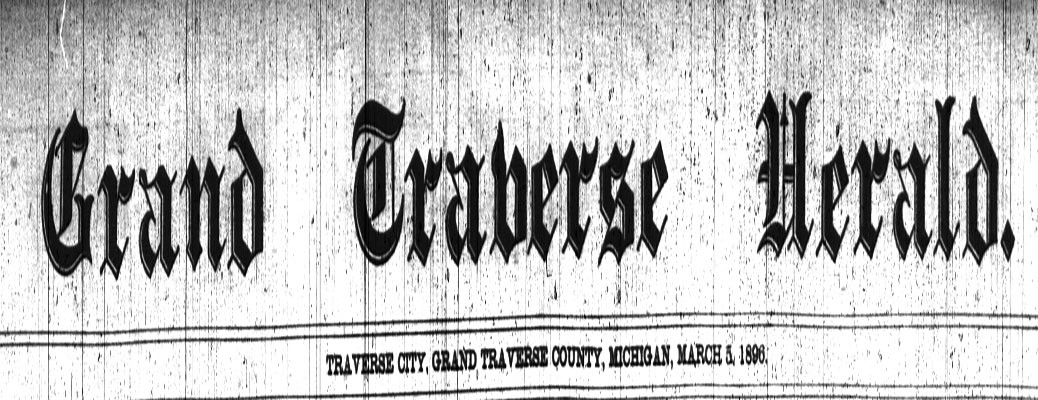When Grand Traverse Herald began publication in 1858, the editors began tracking the freezing dates of Grand Traverse Bay. Perhaps not the most thrilling of past-times, but Bay Freeze dates have long been used as a measure of weather and forecasting.
Imagine living in a dirt settlement, tracks where roads would someday be built, and you rely on your farming abilities and that of your neighbors to get you through the winter. Supplies come in by train, but dangerous conditions, flooding, wrecks, anything that interrupts that supply line could spell disaster. To top that off, you’ve just moved to the region, perhaps from Bohemia, and have no idea what an “average” winter might be like. Stories from frontiersmen might be helpful, but how can you know?
Just as we do now, people tracked weather patterns and made other observations, like when the Bay froze over or when the ice finally melted, to establish these crucial time frames for planting and harvesting, for running timber on the rivers, and other life-sustaining activities. We know this data was important to all: freeze dates, ice storms, and other weather phenomena are recorded not just in newspapers of the time, but in the journals of men and women. Being aware of how the weather acted on average was of the upmost importance for every member of the community.
When was the last time you watched the Bay freeze over? Please click on the article below to open larger, readable images, and take some time out of your day to consider the Bay!



